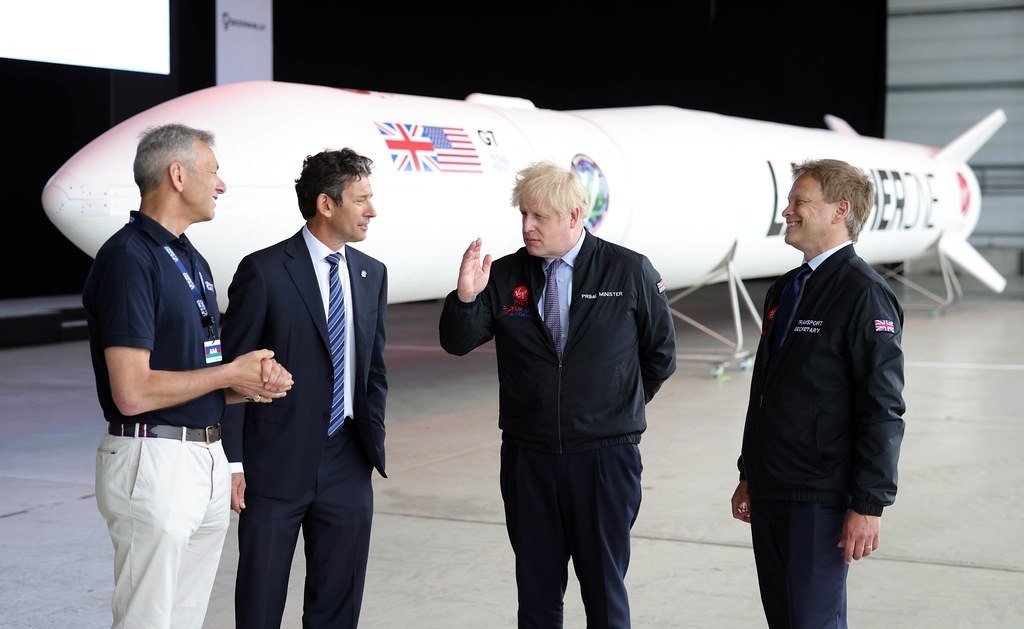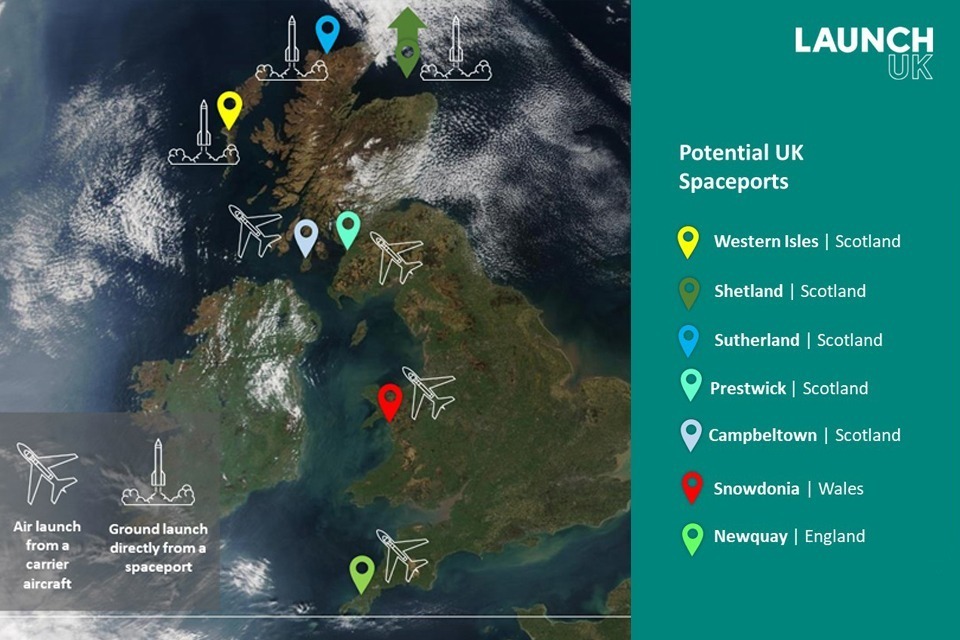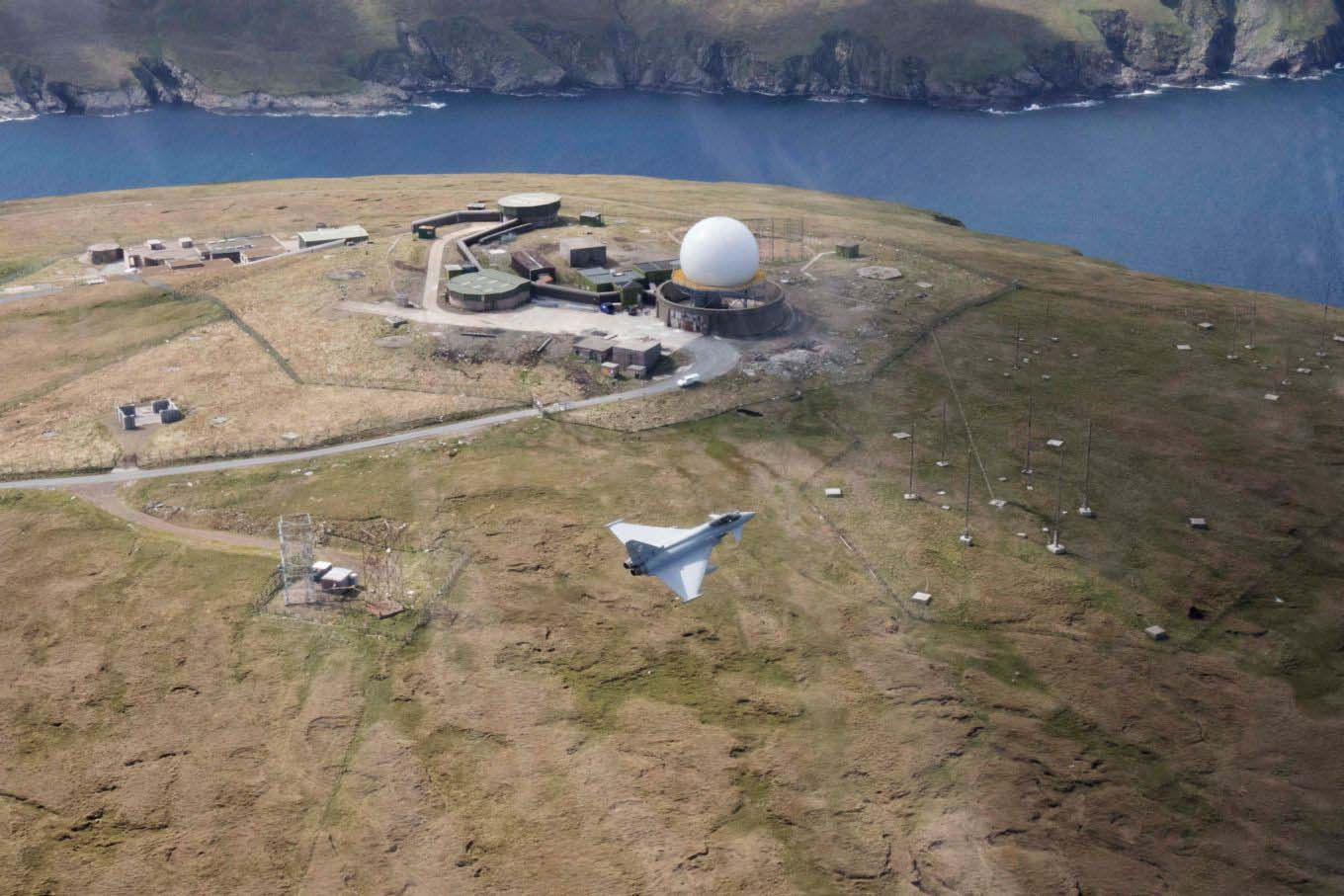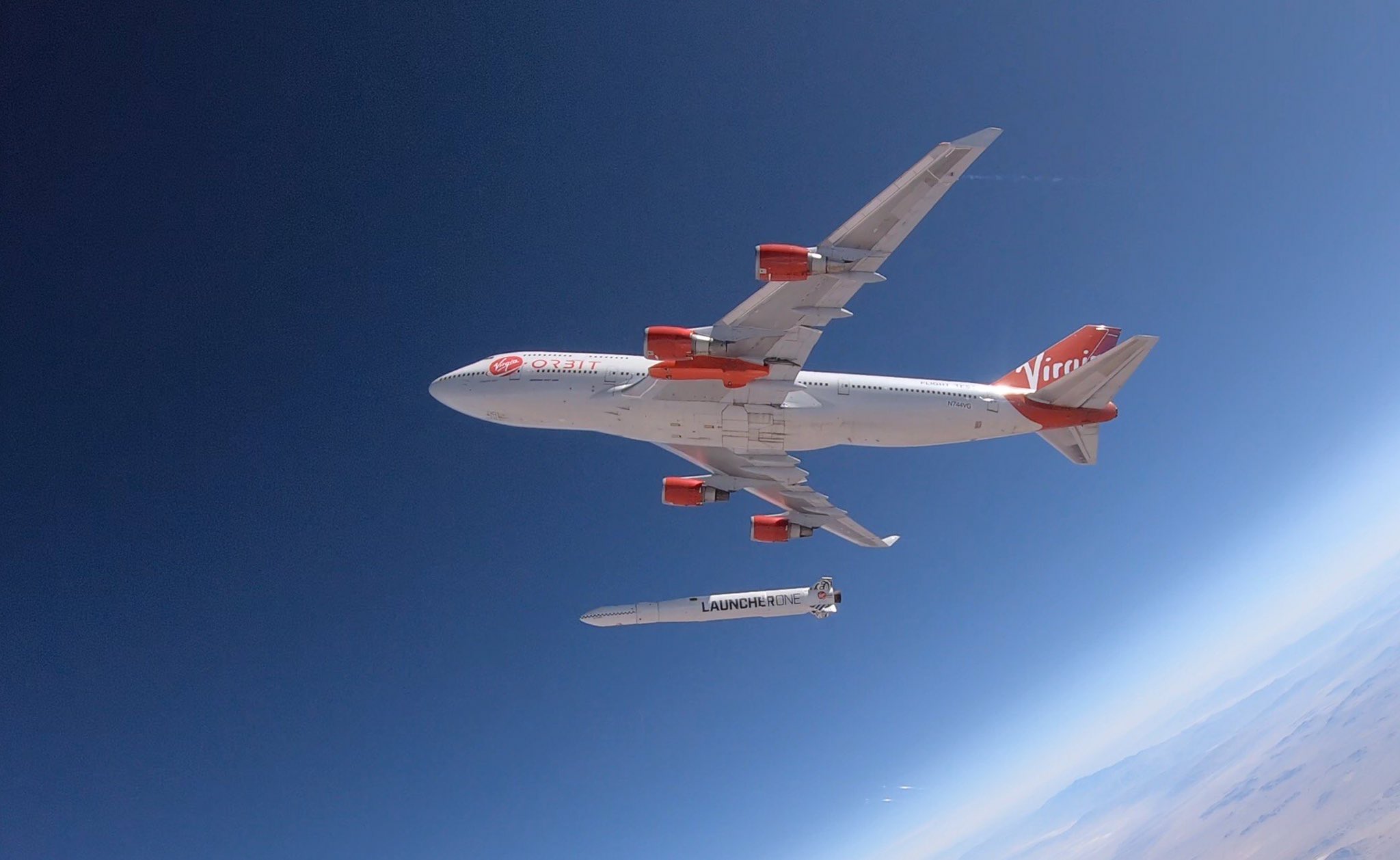- The Ministry of Defence (MOD) is establishing a new Space Command and sees space as a “war-fighting domain” and “fundamental to military operations”.
- The MOD has told Declassified its “space directorate” had 10 meetings with launch pad companies in the past year.
- Richard Branson’s partner Spaceport Cornwall had three meetings with the MOD.
- Scotland hosts five of the seven proposed sites, with the Shetland Space Centre the most likely to launch satellites into space.
- Arms companies are involved at several of the sites — which are opposed by some local campaign groups.
Investment in satellite technology is a major focus for Brexit Britain, with the UK Space Agency under Boris Johnson’s government wanting to open up to seven so-called “spaceports”.
Originally the plan was for these sites to launch commercial satellites into orbit from British soil for the first time, as Brexiteers loosened ties with the European Space Agency.
So far, the UK has used launch pads in other countries, such as Russia or Guiana – a French territory in South America.
Now there are strong signs that Britain’s military wants to launch its own satellites from the UK, despite denials from officials at some spaceport sites.
A defence strategy document released on Monday said space was “fundamental to military operations”, and the head of the Ministry of Defence (MOD) has previously told Parliament that space is now a “war-fighting domain”.
The MOD is establishing a new Space Command to enhance the UK’s military control of space and “assist in coordination of commercial space operation”.

Space Command will be run by a senior officer from the Royal Air Force (RAF), and other members of the RAF have already served in the US Space Force at Vandenburg air base in California to gain experience.
Over the next 10 years, the MOD will spend around £5-billion on Skynet 6, a major military communications satellite scheme.
Solar powered surveillance drones, that could fly for weeks undetected on the edge of space, are also being tested by the UK military in Australia, where one model, the Airbus Zephyr, has repeatedly crashed.
As well as technical glitches, there are also concerns that Russia or China could use “anti-satellite weapons” in space to deliberately cripple or hack Britain’s communications or surveillance capsules.
To find out more about the extent of the military’s role in space, Declassified sent a freedom of information request to the MOD, asking if it had spoken to the companies that want to build spaceports in Britain.
The MOD told us its “space directorate” had 10 meetings with four of the launch pad companies in the past year.
An official said: “We are closely working with the UK Space Agency on their Spaceflight programme to enable a satellite launch capability from the UK.”
They explained that the spaceports are for commercial satellites, but said: “Defence may become one of several customers for this commercial capability in the future.”
Will the spaceports launch commercial satellites?
As well as the military, there are commercial companies that need satellites for their businesses – like weather forecasting or global communications.
OneWeb, a company partly owned by the British government, has 110 satellites in low earth orbit, which are destined to provide internet facilities. These were launched from Russia.
The UK Space Agency – part of the Department for Business – wants to do more. It aims to capture 10% of the global space market by 2030, with thousands of new satellites apparently needed in orbit.
With five of the seven proposed sites in Scotland, the scheme also offers opportunities for the UK government to invest money in high-profile projects ahead of a possible second referendum on Scottish independence.
The other proposed sites are in England and Wales. Arms companies are involved at several launch sites.

Will there be a launch pad in England?
The MOD had three meetings last year with Spaceport Cornwall, a company that wants to launch satellites from the south-west corner of Britain. It is the only possible site in England.
Its project involves billionaire tax exile Richard Branson, who owns the airline Virgin Atlantic.
He has modified one of the airline’s old Boeing 747 planes, called Cosmic Girl, so it can take off from a normal runway and then fire satellites into space while cruising at high altitude.
His plan, known as Virgin Orbit, was successfully tested in January from a runway in California in the US.
Now he wants to use Newquay airport, close to Cornwall’s famous surfing beaches, as a base for his Virgin Orbit project.
Newquay has one of the longest runways in the UK, at 2,744 metres. Declassified visited the site last year while filming a different story, which you can watch below.
Branson has the support of Cornwall council, which owns the airport and received a £306,480 grant from the UK government in 2019 to work on space projects.
The RAF already has a base next to Newquay airport – so it is not surprising the military is interested in Branson’s spaceport scheme.
There is some local opposition. Environmental group Extinction Rebellion has protested against the spaceport plans for Newquay, highlighting its contribution towards carbon emissions.
What about Wales?
Plans for Wales to take part in the UK space race focus on Llanbedr, an airfield inside a national park and near Mount Snowdon.
Its runway is 450m shorter than the one in Newquay, but apparently still long enough for horizontal launches.
The Welsh government has invested nearly £10-million in upgrading the site, including improved road access. The UK Space Agency has provided a half-a-million-pounds grant.
Despite the investment, there appears to have been little activity at the site apart from testing a near-space balloon in March 2020.
Will the military be involved in a Welsh spaceport?
The MOD did not meet the Welsh team last year, but there are some links to the military.
Llanbedr airfield used to be a military research base before it was taken over by the Welsh government, which in 2008 offered a company, now called Snowdonia Aerospace LLP, a 125-year lease to operate the site.
In 2012, the company borrowed money for the lease from the MOD, paying it back last year.
Snowdonia Aerospace LLP is partly owned by an investment firm registered in the Isle of Man, a secretive low-tax jurisdiction.
It works closely with arms company QinetiQ with whom it has tested drones since 2015 – triggering protests from Welsh peace activists.
Environmental activists have also long objected to increased activity at the airfield.
There are plans to establish a permanent “Danger Area” around the airport to allow for more drone testing. A public consultation on this scheme closed in January.
Will Scotland win the race?
Scotland has the best chance to launch a satellite into space, because five of the possible sites are based there.
The most likely is the Shetland Space Centre, on the UK’s northernmost inhabited island – Unst. Like Newquay, it has a billionaire backer – Scotland’s richest man, Anders Holch Polvsen.
He owns the online fashion retailer ASOS and invested £1.43-million in the Shetland Space Centre through his firm Wild Ventures Limited.
If successful, Shetland will launch rockets up to 30m tall into space, delivering satellites into orbit from a site on Unst. They won’t need a runway as the rockets can blast off vertically.
Is the military involved on Shetland?
The island is already used by the Royal Air Force for its Saxa Vord radar station, which monitors northern Europe, sparking suspicion that the spaceport’s payloads will have military applications.
We found that the MOD’s space directorate held three meetings with the Shetland Space Centre last year.

The Shetland team also has a “major partnership” with ArianeGroup, a joint venture of the Airbus and Safran arms companies.
And the spaceport has support from Lockheed Martin, the world’s largest arms company whose missiles are linked to massacres of children in Yemen.
Will Shetland win?
Highlands & Islands Enterprise, a Scottish government-owned body, supports the scheme. A planning application went to the Shetland Island Council for review in January.
It comes after the council voted to consider exploring options for “financial and political self-determination” if Scotland votes for independence.
This could mean that even if Scotland breaks away from the UK, the Shetland Islands may not.
Are there other sites in Scotland?
Yes. Originally the UK Space Agency’s preferred plan was to build a spaceport on the Scottish mainland, along the northern coastline at A’ Mhòine peninsula.
The plan, known as Space Hub Sutherland, received support from the local crofter community – small scale farmers who own some of the land.
However, other land nearby is owned by Anders Polvsen, the billionaire who supports the Shetland spaceport. He is Scotland’s largest landowner with 200,000 acres in the Highlands.
The Highlands council has given planning permission to Space Hub Sutherland, but Polvsen is challenging them in court. He claims it will damage the local environment, including a special protection area.
The billionaire’s opposition is a blow to Highlands & Islands Enterprise and its business partner Orbex, who have been promoting the scheme.
Lockheed Martin originally supported the Sutherland scheme, but the uncertainty seems to have made them switch focus to the Shetlands.
What about the Western Isles?
A third Scottish site is being considered off the north-west coast, at Scolpaig in the Outer Hebrides. It has support from the local Western Isles council which purchased the vertical rocket launch site for £1-million.
The so-called West Isles’ Spaceport has generated some interest from the MOD’s Space Directorate. We found they met twice in the last 12 months.
Arms company QinetiQ is also a partner in this project. It already operates the MOD’s Hebrides rocket range nearby, which is used for testing drones, missiles and other military technology.
As with several of the other possible sites in Scotland, it has received support from the Highlands & Islands Enterprise.
However, the plans received 600 objections in 2019, including from a conservation group, and there seems to be less momentum behind this proposal than many of the others.
Is there anywhere else?
Another contender is Campbeltown airport, 100km south-west of Glasgow. It received £488,000 from the UK Space Agency in 2019.
The airport’s owners set up a subsidiary, Discover Space UK, to try to develop the old military airbase at Machrihanish into a spaceport.
The bid has received support from the local Argyll & Bute council as well as Highlands & Islands Enterprise.
Of all the possible spaceports in the UK, it is the only one to have a runway longer than the required minimum length of 3,000m for horizontal launches.
It was designated as NASA’s emergency landing site in Europe ahead of the 1981 space shuttle launch.
The seventh site is Glasgow Prestwick Airport, which is owned by the Scottish government. It would be another horizontal launch site, managed by a firm called Prestwick Aerospace.
Although there are some links to the arms company BAE Systems, Prestwick Aerospace did not meet with the MOD’s space directorate last year – suggesting the site is not a high priority for military planners.


